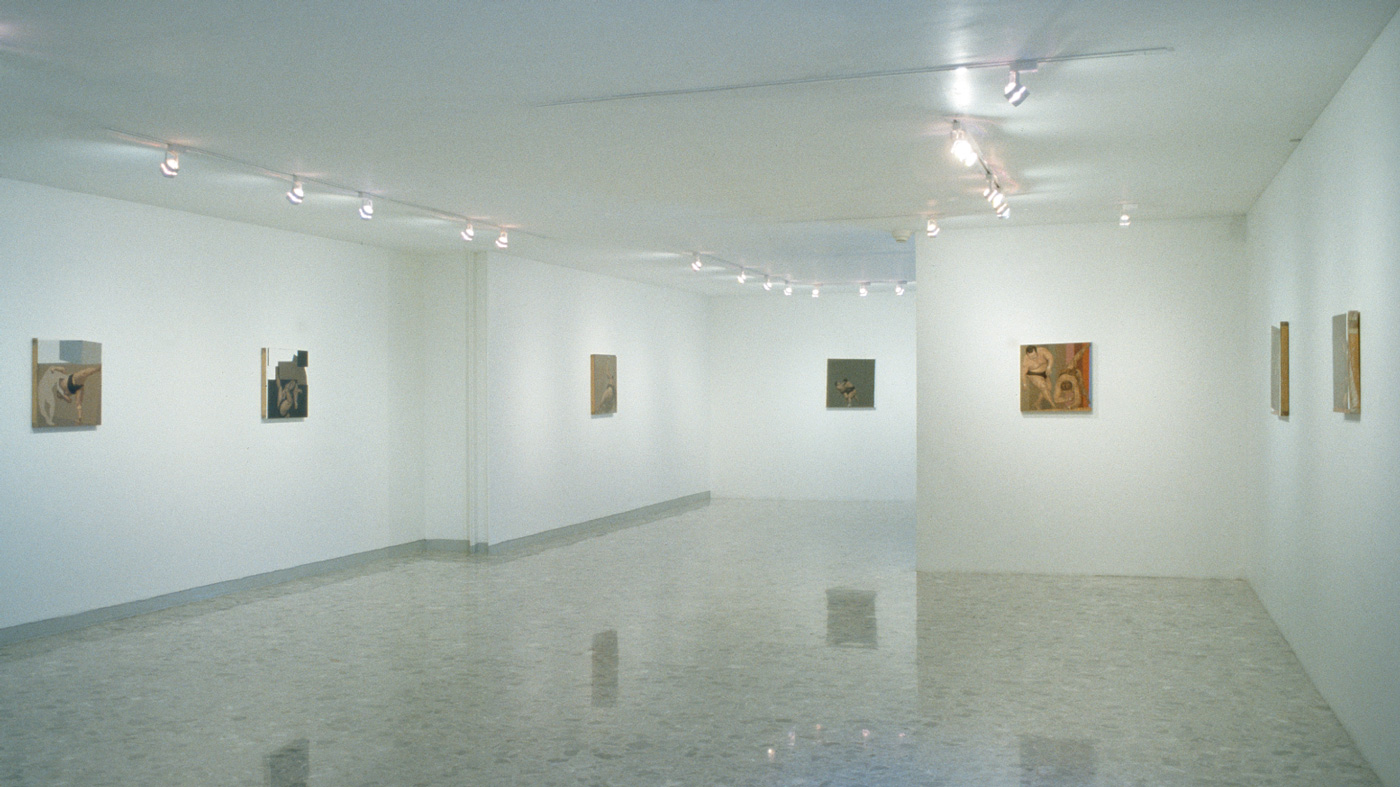Sumo
1995 – 1998

Assuming a model that would have charmed Édouard Manet, the Sumo wrestlers here are used as morphemes ready to adopt any mask and meticulously act out the relativity of their fictions. Jusidman invokes a wide historical repertoire of visual languages and demonstrates an unconcealed ability to seduce visually. His examination of the syntax of modern painting also makes explicit complex interrelations among representational strategies. These paintings’ stylistic transgressions are controlled with sober elegance through a brilliant alibi, whereby style is not merely quoted but undertaken from within. They reveal a preference for (re)presenting the type of pictorial debate that emanates from an analytical engagement with the construction of form. The oppositions played out refer to geometrical principles of composition—as battles between figure and ground, modeling and flatness, vibration and monochromy. The Sumo series cynically questions its own auratic façade, allowing in its fragile conventionality a glimpse of the imminent collapse of illusionism onto the support itself.
—Osvaldo Sánchez, Sumo, 1997
By laying out the parameters of the fight, the strict rules of Sumo wrestling enhance the appreciation of the wrestlers’ force. This force is constrained by the ways in which it is allowed to flow; the small circular area where the fight takes place holds in check the potentially dangerous behavior of the wrestlers. Thus, the notion of force in Sumo wrestling is a function of bringing together in the most efficient manner physical prow ess and acknowledged restraint. The wrestling agents in my Sumo paintings are not the depicted characters, but the categories through which we’ve conventionally come to catalogue paintings. My idea is to set the painting into plastic motion through the clashing of categories, in a way that the viewer’s attention alternates between one and the other. If force is contained, this is so the outcome of the fight might be decided through the participation of the spectator, who becomes, in turn, the decisive fighter in the ring.
—Yishai Jusidman
src="../wp-content/uploads/yishai-jusidman-sumo-121.jpg">
src="../wp-content/uploads/yishai-jusidman-sumo-123.jpg">
src="../wp-content/uploads/yishai-jusidman-sumo-125.jpg">
src="../wp-content/uploads/yishai-jusidman-sumo-126.jpg">
src="../wp-content/uploads/yishai-jusidman-sumo-127.jpg">
src="../wp-content/uploads/yishai-jusidman-sumo-129.jpg">
src="../wp-content/uploads/yishai-jusidman-sumo-130.jpg">
src="../wp-content/uploads/yishai-jusidman-sumo-131.jpg">
src="../wp-content/uploads/yishai-jusidman-sumo-132.jpg">
src="../wp-content/uploads/yishai-jusidman-sumo-133.jpg">
src="../wp-content/uploads/yishai-jusidman-sumo-135.jpg">
src="../wp-content/uploads/yishai-jusidman-sumo-136.jpg">
src="../wp-content/uploads/yishai-jusidman-sumo-137.jpg">
src="../wp-content/uploads/yishai-jusidman-sumo-139.jpg">
